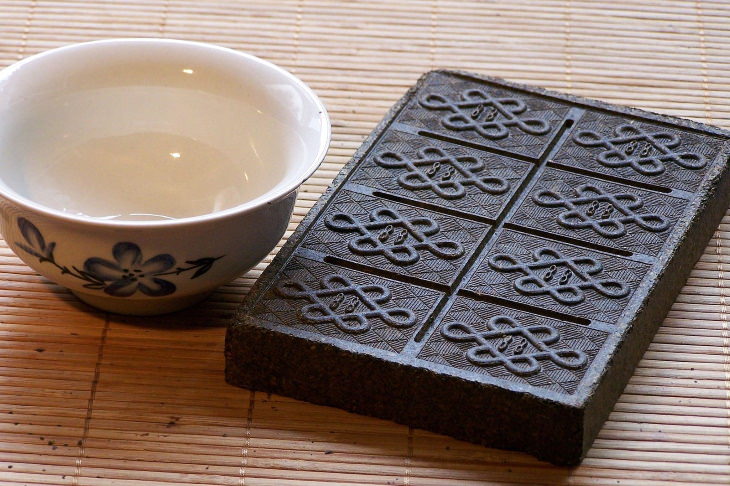1. Tea Bricks
The practice of using edible objects as a form of currency was quite widespread across the globe due to its practicality, as these object could be easily consumed in times of hunger. One of the most outstanding items used as payment across China, Turkmenistan, Mongolia, Tibet, Siberia, and Russia between the 9th and 20th centuries were tea bricks.
These branded bricks of tea were portable, easy to preserve, and very useful, which is why many people actually favored receiving tea bricks over coins. After all, unlike coins, you can easily break off a part of the brick and brew it into a hot cup of tea. The value of each tea brick depended on its stamp, which identified what kind of tea it's made of and who produced the tea.
2. Textile
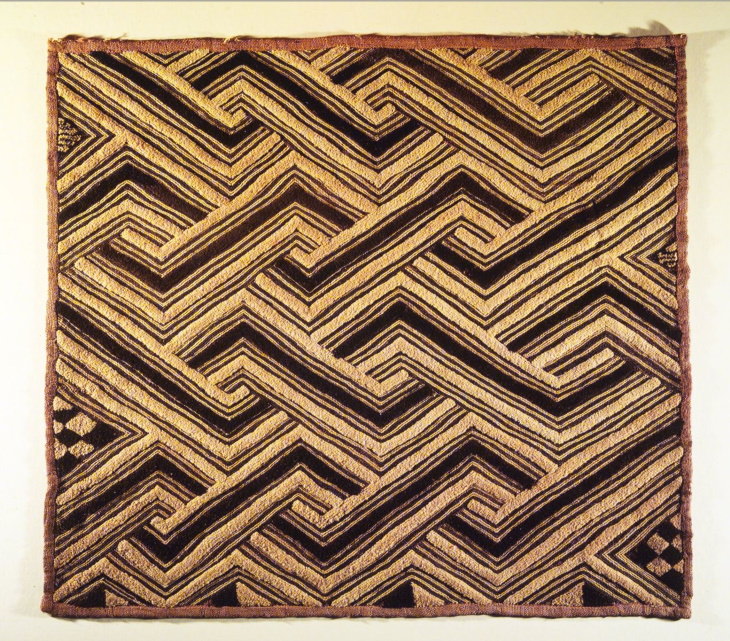
Certainly, one of the most outstanding and beautiful forms of currency is the practice widespread across some ethnic groups in Congo, who used embroidered pieces of fabric as payment. The Kasai velvet is probably the most famous of these textile currencies. Produced by the Shoowa people from the Kuba Kingdom in the modern-day Republic of the Congo at least since the 17th century, these hand-woven and hand-decorated pieces of fabric were no more than 60 cm (2 ft) long and were produced from the fibers of the raffia palm.
The value of each piece depended on the complexity of the design and the size of the fabric. Kasai velvets were rarely used to produce clothing. Instead, they were traditional gifts, ceremonial objects, and a means of payment. In fact, the Shoowa people treasured these fabrics so much that they sometimes buried people with them.
3. Arrowheads

Many cultures actually used arrowheads as a means of currency. One of these cultures was Japan, where arrowheads, as well as gold powder and even rice grains, were the earliest currency systems, being widespread until the 7th-8th centuries AD. However, the most well-known and probably the first culture to use arrowheads as a means of payment were the tribes that lived along the northern coasts of the Black Sea between the 11th and 5th centuries BC.
Issued in the Scythian Kingdom, these arrowheads gradually became more and more decorative, eventually resembling fish and dolphins more than they did weapons. Eventually, these arrow payments were replaced by coins.
4. Rai Stones

The award for the most cumbersome currency system in history goes to Rai Stones, the traditional currency of the Micronesian Island of Yap that existed from 1000–1400 AD and still has a cultural significance to the Yapese people. These large, doughnut-shaped stones were mined mostly on the island of Palau and transported to Yap to serve as a means of currency and a status symbol.
Keep in mind that some of these stones are truly huge, up to 4 m (13 ft) in diameter, weighing up to eight tons! The bigger the stone, the more valuable it is, as the size of the stone has a direct relation to how difficult it was to transport. You might be wondering, how did people use these cumbersome stones as money transactions? Well, since most of these stones weren't actually so big, people would simply give them to each other, but when it came to larger rai stones, their ownership was simply transferred by word of mouth without actually moving them.
5. Squirrel Pelts

Here's yet another strange fact about Russia - in the Middle Ages, the country used squirrel pelts as a form of currency. It's true, the pelts of the poor little rodents were equated to larger banknotes, whereas their claws and snouts were used as change... As terrible as it sounds, this bizarre practice coincidentally helped Russians reduce the number of plague-infected rodents dramatically, and as a result, the country was affected by the Black Death much less than other surrounding nations.
6. Salt
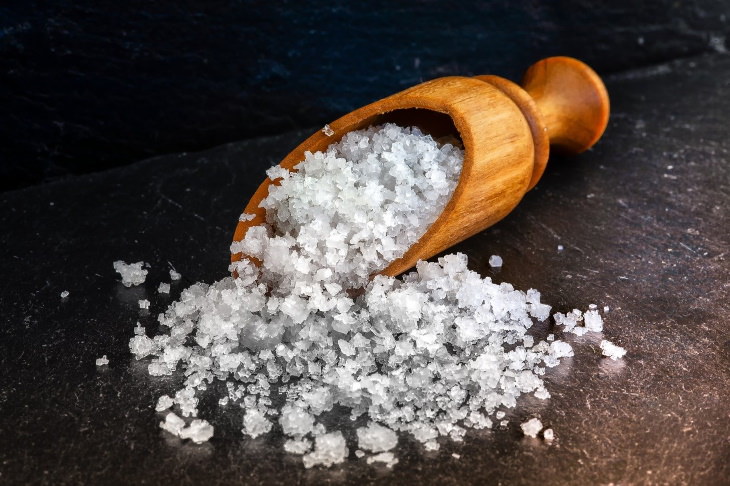
Were we living in Ancient Rome or China, we'd all be rich right now. These secret riches of yours hide in the least likely of places, your pantry. In the past, when refrigeration was not a thing, salt played a key role in preserving foods, and since mining practices weren't so advanced back then, salt was often hard to get and extremely expensive.
In fact, one of the earliest recorded tax payments in history was completed in salt. It dates back to 2200 BC during the reign of Emperor Yu the Great of China. Ancient Romans used salt as currency, too. Here's another fun fact: because Roman soldiers were paid in salt, their payments were referred to as "salarium", which means "salt money" in Latin. It is from this word that both the English words "salary" and "soldier" come from.
7. Dolphin Teeth

Probably the most gruesome monetary practice in the world is from the Solomon Islands, where dolphin teeth have been used as currency for hundreds of years. Unfortunately, the inhabitants of the islands returned to the gruesome practice in 2008, when their paper currency lost value. As a result, thousands of dolphins have been killed and the ancient currency nearly quadrupled in value. Eventually, animal conservation groups stepped in and the practice was halted.
8. Cacao Beans
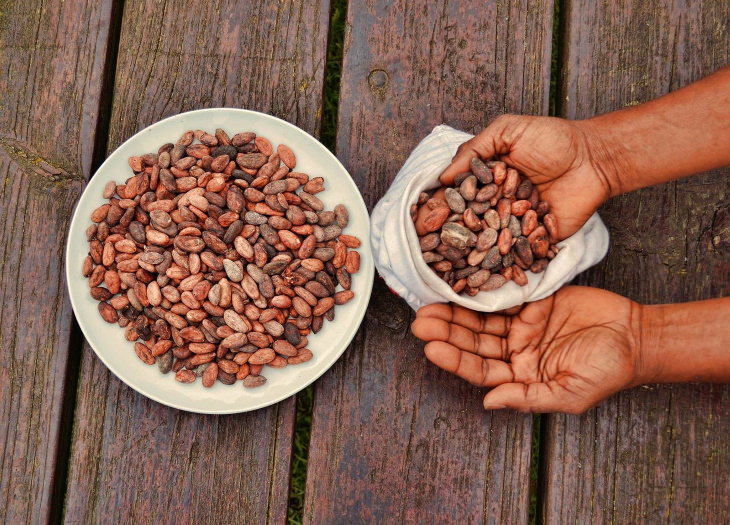
Most of us have a soft spot for chocolate, but our love and appreciation for chocolate is not even close to that of the Mayans, who were the first to grow cacao trees. Mayans never used coins to pay for goods, instead, they paid with cocoa beans, which is certainly the most delicious form of currency in history. Records point out specific examples, too: you could buy 1 rabbit for just 10 cocoa beans.
The practice continued during the Aztec Empire, and Spanish conquistadors also recorded some price comparisons: for 100 beans, you could purchase a turkey hen or a canoe filled with fresh water, for example.
9. Shells

Shell money was apparently a thing on every continent and inhabited land, from North America to Africa and Australia and Oceania. The earliest records of such shell money date all the way back to 1200 BC, with China being one of the first countries to use cowry shells as coins. From there, the practice likely spread through trade routes in the Middle East and the Mediterranean in the West, and to Japan in the East. Apart from being used as money, shells also played a role as a decorative element in clothing and accessories.
In some regions, such as the islands north of New Guinea, the shells were broken into flakes and threaded on a string. The longer the thread, the more expensive it is. In this region, shell money is still technically considered legal today.
10. Gold Weights
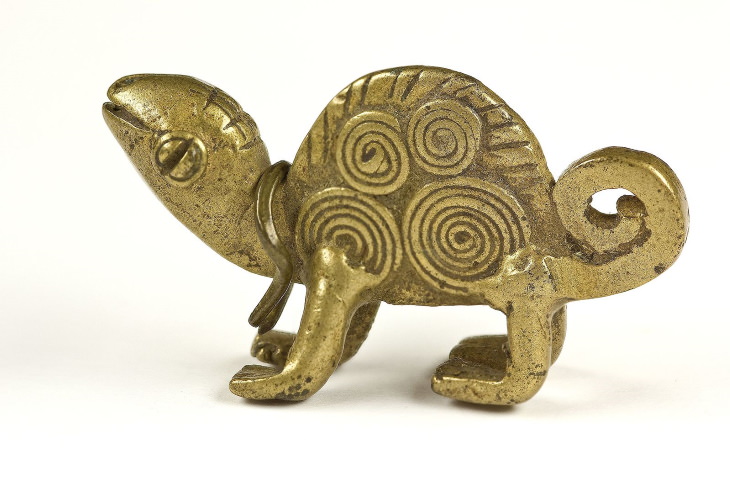
A clever system of currency was widespread among the Akan people of Cote d’Ivoire and Ghana. These were a set of carefully-weighed brass or copper figurines in the shapes of animals, proverbs, and other culturally-significant objects called the Akan gold weights.
These figurines were used to measure out specific weights of gold dust, which was the actual currency, in order to pay for other commodities, such as food, clothing, or weapons. Owning gold weights was a symbol of high status. The practice is said to have started around the 14th century and lasted until British colonial times.
11. Peppercorns
Spices were also in high demand back in the day, as getting them was difficult and they were often extremely scarce. This is exactly what had happened in Ancient Greece and Rome, where black peppercorns were so valuable they were used as money. We know that from historical recordings that date back to the 5th century stating that Atilla the Hun and Alaric the Visigoth asked for black pepper as ransom money during their attack on Rome.
The practice continued in Europe through the Middle Ages, and whole expeditions to the far east were conducted to retrieve the so-called “black gold”. Until the 19th century, only the very rich could afford to season food with black pepper, which seems quite ironic because it's considered the most mundane and cheap spice today.
12. Swords
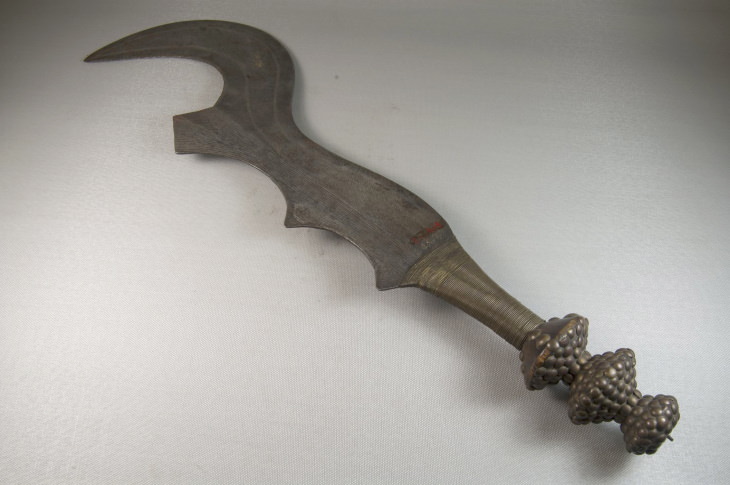
The Ngombe tribe and the neighboring ethnic groups of the Congo used ceremonial swords called Ngulu swords as currency. These ornamental swords were made in elaborate designs, and their most distinguishing common feature was that they were sharp on the outside. These swords were also known as “executioner's swords” and they were allegedly used for ceremonial executions, but later became pure symbols of status and wealth. Somewhat similarly, knives were also used as currency during the Zhou dynasty in China, about 2500 years ago.
Please share this article with those who love history!

